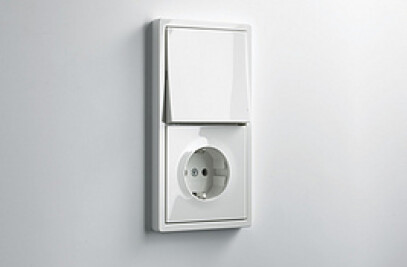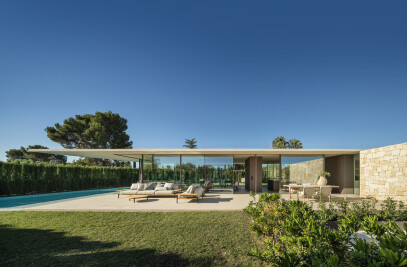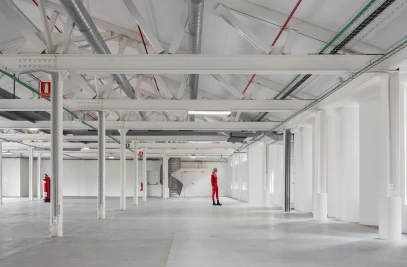Schorndorf's municipal church is a newly-restored jewel nestling in the heart of the historic old town. The church, which was first consecrated in 1511, has been gradually renovated and restored in recent years. First to be tackled was the exterior shell and bell tower, then the interior was completely gutted and lovingly refurbished in painstaking detail. The end result: a church restored to its dazzling former glory – and with added convenience through the use of modern building technology. Now, the sexton can use an iPad to set the bells ringing, call up some 30 pre-programmed light scenarios, and regulate or pre-programme the heating with ease. The tilt windows are opened by a practical automatic function, so that the temperature and humidity can be regulated.
Master church builder Aberlin Jörg started to build this church in the Swabian town of Schorndorf in 1477. Peter von Koblenz and Jakob von Urach continued his work, and the impressive edifice was finally dedicated to St. Mary in 1511. The church has been Protestant since the introduction of the Reformation in 1534, and was last renovated in 1960. In 1995, exterior renovation work commenced, including the tower and belfry. Three new bells were added as well as coloured stained-glass windows, which were donated during the restoration work. 2012 saw the start of the total renovation and restoration of the church's interior, which was carried out by Schorndorf-based firm Treide Architekten BDA. The focus was on conserving the church's heritage, improving the lighting of the nave, and modernising the building's technology – including its electrical, heating, and acoustic systems.
The renovation work took some 2 ½ years and resulted in a radiant, light-filled interior with crystal clear acoustics and a reliable heating system. "The difference is tremendous," commented the church's sexton, Betina Weinert, who witnessed the entire process, which started with the church being completely emptied, diggers entering the nave, tearing up the floor and digging new shafts, and progressed with a step-by-step renovation of the interior and the old ornaments being brought back into the church and restored. A variety of different trades worked shoulder to shoulder on the project, from heating engineers and master electricians to organ builders and conservators.
From diggers to tiny brushes
Rotten beams in the galleries were replaced, the damaged terrazzo stone floor repaired, imperfections and dirt on the walls, vaulted ceilings and pulpit removed, cracks plastered, and the pews renovated. When the main organ (which had been in danger of collapsing) was restored, new wiring was also fitted and all the organ pipes were removed and subsequently replaced. The church was fitted with new electrical and heating systems. A lot of effort was spent on getting the lighting and acoustics right, and the conservators spent countless hours working with tiny brushes to faithfully restore the pulpit and the decorations on the balustrades, walls and vaults to their original condition.
A reliable heating system
A new control unit for the gas-fired water boiler ensures that the room temperature and humidity is precisely regulated, and this in turn is constantly fine-tuned to suit the sensitive organ engineering. Several heating cabinets have been installed in the church's interior, with floor convectors in the vestibules and the Lady chapel and bench heaters in the two front rows providing additional heat, so that the church has a steady, basic temperature.
Electrical installation based on a KNX system
Modern safety requirements and damage to the old electrical installation meant that a complete rewiring was imperative. To make the church sustainable in the long term, the Vetter Planning Office for Electrical Installations opted for a KNX system. "Functions can be automated, networked, and simplified as a result. This means more convenience, added efficiency in operating the system, and increased security," explained system integrator Ralf Schlotz. Mr Schlotz and his team were responsible for planning the building automation, and the installation and programming of the church's entire electrical system.
"It was important to us from the very start to provide and develop a system that can be used intuitively, despite its extensive solutions," he added. "It's not just the sexton who has to be able to handle the technology. The voluntary church officers, most of whom are already retired, also need to feel at home with it." Operated via an iPad and with easy-to-understand Gira graphics, the system has been designed to be handled as simply as possible, despite its broad range of functions. A KNX system links all the relevant electrical components, which can then be controlled easily, in dependency of each other – either on a manual or fully automatic basis. The central control unit behind this is a Gira FacilityServer, where all the information from the sensors comes together for analysis, and commands are then forwarded to the actuators.
Today Betina Weinert, the church's sexton, uses the iPad to operate the lighting, start the bells ringing, programme the heating for special events or regulate the shading for the organ as if she's been doing it all her life. Ralf Schlotz and his team's frequent presence at the church during the initial stages was important in this respect, so that he could explain the ins and outs of operating the system. "To start with, I felt like I was being submerged by an electric tidal wave, but since then, I've got used to the convenience of it," smiled Ms Weinert. Complex light scenarios for festive services or an evening of organ music can be activated with a single click, she can time the ringing of the bells precisely to the Lord's Prayer without moving from her seat, and can deactivate all light sources and power-hungry devices at once before leaving the church.
Bright lighting for the nave, choir stalls and gallery
The old lights were replaced by two rows of pendant lights and mounted following the pattern of the vaulted ceiling. The ceiling lights underneath the gallery and the lights in the vestibules were retained and revamped. "I have programmed a total of 29 different lighting scenarios for the church, in consultation with the lighting designers at Kreuz&Kreuz," recounted Ralf Schlotz. Bright lighting for normal Sunday or special festive services, dimmed light for Christmas Eve or a candlelit mass. However, each light or group of lights can also be controlled individually, and nearly all elements are dimmable. The lights are operated through the Gira interface on the iPad. Selected functions are activated using Gira touch sensors in the Gira F100 switch design – for example the "Off" function, which turns out all the lights in the entire church.
Bell ringing via the iPad
The municipal church's seven bells are housed in the bell tower, some 63 metres above the nave. Gloriosa – the largest bell, which is rung on festive days – is just under two metres in diameter and clocks in at more than five tonnes in weight. No great physical exertion is now required to ring this behemoth, as system integrator Ralf Schlotz has even integrated the bell ringing into the KNX system. A clapper automatically hits the outside of the bell every quarter of an hour to mark the time of day. A different clapper inside the bell rings out the chimes to announce services, christenings, weddings, and the Lord's Prayer. Important: the inside and outside of the bell must not be struck at the same time, so as not to damage the bell. For this reason, if the chime to mark the Lord's Prayer happens to fall on the quarter hour, the sexton can skip the quarterly ring and instead, start up the special peal for prayers. On Fridays, she also always programmes in the call to worship, exactly according to a defined order for the bells, which prescribes which bells should ring in which sequence and for which occasion.
Temperature control and ventilation
The heating is also programmed, for example for special events or concerts, whereupon the fan is regulated fully automatically. However if necessary, it can also be turned on or off manually. The heating is automatically turned up on Sundays from 8 am to 12 noon, as is the underfloor heating in the adjoining children's chapel. In addition, the KNX system guarantees that a basic temperature of 16.7° C is always maintained and that a defined humidity level is not exceeded. Sensors measure both values, transmit these to the Gira FacilityServer, which in turn transmits a command to the heating system, or opens or closes the electric window casement if any of the threshold values are exceeded. The organ in particular needs this constant interior climate.
Socket outlets can also be switched on or off via the sexton's tablet or smartphone and the Gira HomeServer app, for example in the area outside the church for particular activities. The releases for motor hoists that are used for moving a spotlight track or hanging the advent wreath are separately password protected. The projector and screen can also only be deployed by entering a password – thereby ensuring that these functions can only be used by authorised persons.


































